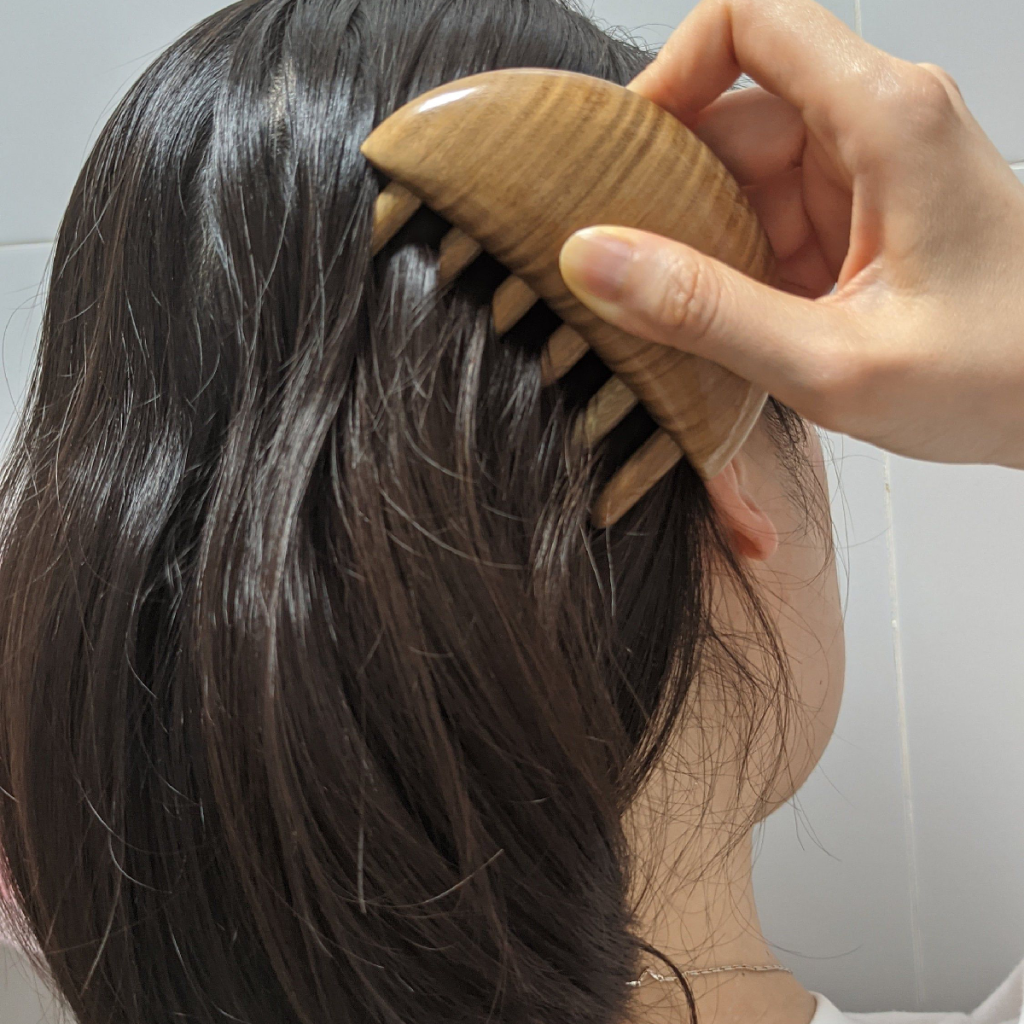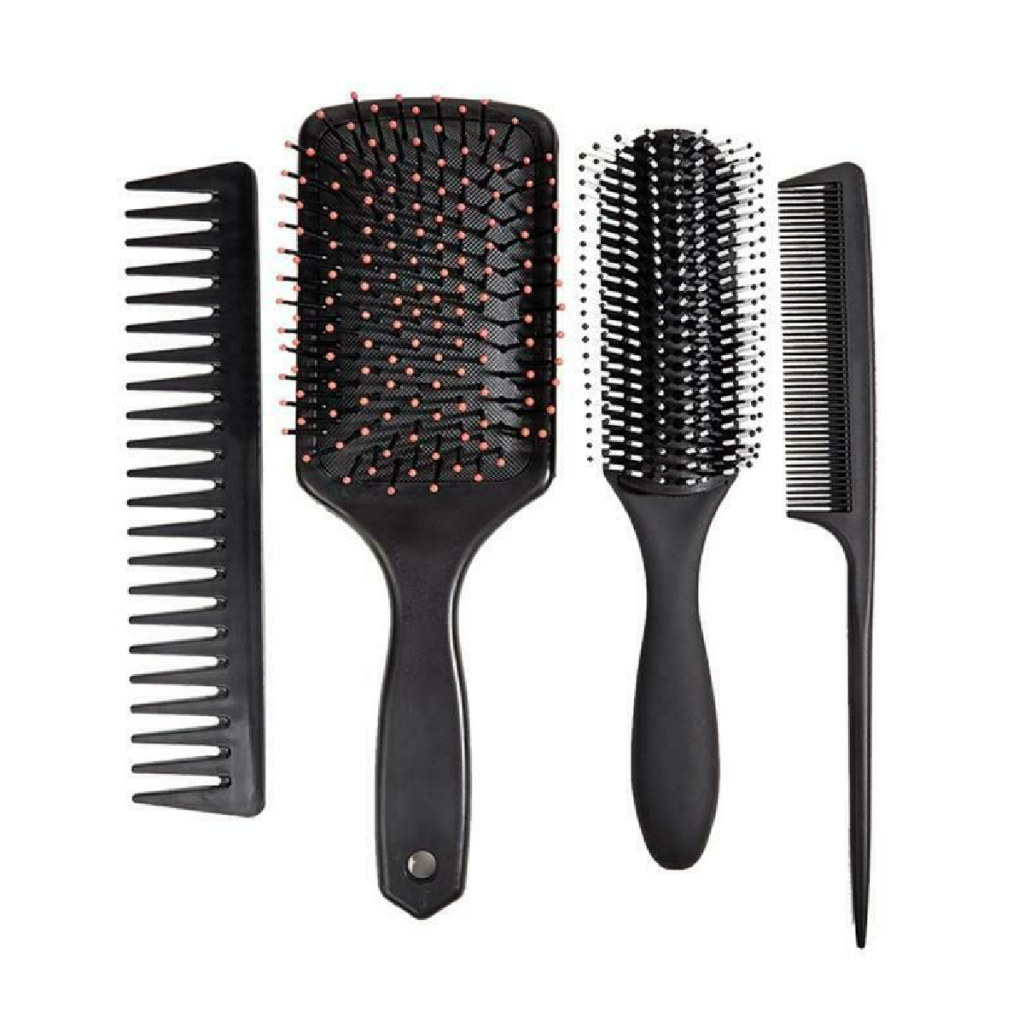Discover the impact of brushing and combing on hair health.
How Brushing and Combing Affects Hair Health
Are you tired of bad hair days? Do you yearn for luscious locks that turn heads everywhere you go? Well, my friend, you’re in luck! In this article, we’re going to dive deep into the world of hair health and how brushing and combing can make all the difference. So, grab your favorite brush or comb and let’s embark on this hair-raising adventure!

Understanding the Basics of Hair Health
Before we delve into the magical realm of brushing and combing, let’s first understand the basics of hair health. Our hair is more than just a pretty accessory; it’s a living, breathing part of us. So, where does it all begin? Well, let’s take a peek at the structure of our marvelous mane.
Each strand of hair is made up of a protein called keratin, which is also found in our skin and nails. Keratin is responsible for the strength and structure of our hair. It gives our locks the ability to withstand daily wear and tear, whether it’s from styling, environmental factors, or simply running our fingers through it.
When we look closer at a strand of hair, we can see that it consists of three layers: the cuticle, cortex, and medulla. The cuticle is the outermost layer, resembling the tiles on a roof. It acts as a protective barrier, shielding the inner layers from damage and moisture loss. Think of it as the hair’s first line of defense.
Beneath the cuticle lies the cortex, which is the thickest layer of the hair shaft. This layer is responsible for giving our hair its strength, elasticity, and color. It contains the pigment that determines whether our hair is blonde, brunette, red, or any other shade in between. It also houses the proteins that give our hair its flexibility and ability to bounce back after being stretched or styled.
In some hair types, there is an additional innermost layer called the medulla. This layer is typically found in thicker hair and adds an extra layer of awesomeness to our tresses. While the exact function of the medulla is not fully understood, it is believed to contribute to the overall strength and resilience of the hair.
The Role of Sebum in Hair Health
Now that we’ve covered the structure, let’s talk about sebum. No, it’s not some mythical creature lurking in your scalp; it’s actually the natural oil produced by your sebaceous glands. Sebaceous glands are tiny glands found near the hair follicles, and their primary function is to secrete sebum.
Sebum acts as a built-in moisturizer for your hair, keeping it soft and shiny. It helps to lubricate the hair shaft, preventing it from becoming dry and brittle. Additionally, sebum has antimicrobial properties that protect the scalp from harmful bacteria and fungi.
However, like many things in life, balance is key. Too much sebum production can lead to greasy, oily hair, while too little sebum can result in dry, dull locks. Various factors can influence sebum production, including hormonal changes, genetics, and even environmental factors such as humidity.
It’s important to strike a balance when it comes to sebum production and hair health. Regular cleansing and proper hair care can help maintain a healthy level of sebum without stripping the hair of its natural oils. Finding the right balance for your hair type and lifestyle is essential to keep your locks looking their best.
The Science Behind Brushing and Combing
Alright, it’s time to put on our lab coats and get scientific! Ever wondered how brushing works its magic on your hair? Well, wonder no more!
When it comes to hair care, brushing and combing play crucial roles in maintaining healthy and beautiful locks. Let’s dive deeper into the science behind these grooming techniques and discover the fascinating mechanisms at work.
How Brushing Works
When you brush your hair, the bristles gently massage your scalp, stimulating blood circulation and promoting the distribution of sebum. Sebum, a natural oil produced by your scalp, acts as a protective barrier for your hair, keeping it moisturized and nourished.
As the bristles glide through your strands, they help detangle knots and distribute the sebum from the roots to the ends. This process not only ensures that your hair receives the necessary nutrients but also gives your scalp that oh-so-relaxing sensation, relieving any tension or stress you may be experiencing.
Additionally, brushing helps to exfoliate your scalp by removing dead skin cells and promoting a healthier environment for hair growth. By gently stimulating the hair follicles, brushing can even encourage new hair growth, making your mane appear fuller and more voluminous.
The Effects of Combing on Hair
Combing, on the other hand, focuses more on maintaining the smoothness and alignment of your strands. It is especially beneficial for individuals with longer hair or those who desire a sleek and polished look.
Similar to brushing, combing helps distribute the sebum evenly along the hair shaft, preventing excessive oiliness at the roots and dryness at the tips. This balanced distribution of natural oils contributes to the overall health and shine of your hair.
Furthermore, combing can be a great way to gently remove any pesky particles or dead hair that may have taken up residence on your crown. By regularly combing your hair, you can keep it free from debris and ensure that your scalp remains clean and healthy.
Moreover, combing has the added benefit of reducing frizz and static, as it helps to align the individual strands and smoothen the cuticles. This results in a more manageable and tangle-free mane, making styling and maintenance a breeze.
So, the next time you reach for that brush or comb, remember the science behind these grooming rituals. Not only are you pampering your hair, but you’re also taking care of your scalp and promoting overall hair health. Embrace the wonders of brushing and combing, and let your hair shine with radiance!
The Benefits of Regular Brushing and Combing
Now that we’re armed with the knowledge of how brushing and combing work, let’s explore the incredible benefits that come along with it.
But first, let’s take a moment to appreciate the sheer joy that comes from running a brush or comb through your hair. The sensation of the bristles or teeth gliding through your strands is nothing short of heavenly. It’s like a mini massage for your scalp, leaving you feeling relaxed and refreshed.
Distribution of Natural Oils
Regular brushing and combing ensure that those glorious natural oils we mentioned earlier are evenly spread throughout your hair. This natural conditioning helps to keep your locks hydrated, manageable, and oh-so-touchable.
Imagine this: as you brush or comb, the oils from your scalp travel down the length of each strand, creating a protective barrier against dryness and damage. It’s like nature’s own leave-in conditioner, nourishing your hair from root to tip.
And let’s not forget the added bonus of a healthy scalp. By distributing the oils, brushing and combing help to prevent dryness, itchiness, and flakiness. So not only will your hair look great, but your scalp will thank you too.
Stimulating Hair Growth
Ever dreamt of having hair that grows faster than a cheetah running after its prey? Well, regular brushing and combing can’t turn you into a superhero, but they can help stimulate blood flow to your scalp. This increased blood circulation promotes the growth of new hair follicles, giving your mane that extra boost.
Think of it as giving your hair a workout. Just like exercise gets your heart pumping and your blood flowing, brushing and combing get your scalp in the zone for optimal hair growth. So if you’re looking to achieve Rapunzel-like lengths, make sure to incorporate regular brushing and combing into your hair care routine.
Removing Dead Hair and Impurities
Just like dust bunnies lurking under your bed, your hair collects all sorts of impurities throughout the day. Brushing and combing provide a gentle exfoliation, ridding your locks of dead hair, dirt, and other unwelcome guests. Say goodbye to those unwanted hitchhikers!
Picture this: as you run a brush or comb through your hair, you’re not only detangling and smoothing, but you’re also lifting away any debris that may have found its way into your precious locks. It’s like giving your hair a mini spa treatment, purifying it and leaving it feeling fresh and rejuvenated.
And let’s not forget the satisfaction of seeing all that dead hair and gunk come out with each stroke. It’s oddly satisfying, like watching a magic trick unfold before your eyes. So embrace the power of brushing and combing, and revel in the joy of a clean and purified mane.
Potential Risks and Damages from Over-Brushing and Over-Combing
Now, my friend, like all good things in life, there can be too much of a good thing. Let’s take a look at some of the risks and damages that can occur if we go overboard with our brushing and combing desires.
Breakage and Split Ends
If you find yourself brushing or combing your hair with the vigor of a marathon runner, you may be risking breakage and split ends. Treat your hair with care and gentleness to avoid these unwelcome hair crashers.
Scalp Damage
The scalp may seem like an indestructible fortress, but it’s actually quite sensitive. Over-brushing or over-combing can irritate the scalp, causing inflammation and even dandruff. So, remember, a gentle touch goes a long way!
Overproduction of Oil
Remember our friend, sebum? Well, if you brush or comb your hair excessively, you might send a signal to your scalp that it’s not producing enough oil. In response, the sebaceous glands go into overdrive, leaving you with an oil slick that even a fried chicken would envy!
Choosing the Right Brush and Comb for Your Hair Type
Now that you’re equipped with hair knowledge galore, let’s focus on finding the perfect brush or comb for your beautiful locks.

Brushes for Fine Hair
If you have fine hair, opt for a brush with soft bristles. These gentle beauties will detangle your locks without causing any unnecessary breakage. Look for brushes with natural fibers like boar bristles, which distribute sebum more evenly.
Combs for Thick Hair
Thick hair requires a comb that can handle the challenge. Go for a wide-toothed comb that will help detangle while minimizing breakage. Embrace those luscious locks, my friend, and show them off!
Tools for Curly Hair
Curly hair can be a beautiful maze of awesomeness. To keep those curls intact, look for a wide-toothed comb or a brush with staggered bristles. These will help separate and define your curls without causing any frizz.
Well, my fellow hair enthusiasts, we’ve reached the end of our hair-raising adventure through the world of brushing and combing. Armed with the knowledge of how these simple acts affect our hair health, we can now brush and comb our way to glorious tresses. So remember, be gentle, choose wisely, and let your hair be the crowning glory you were born with!





